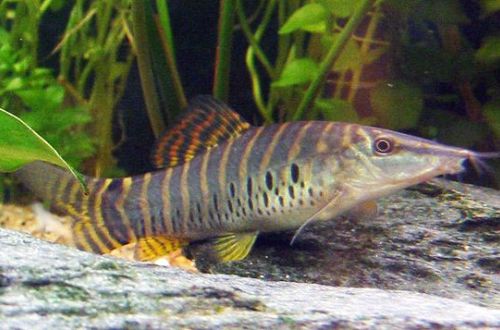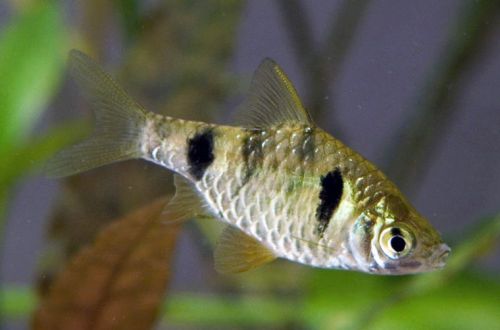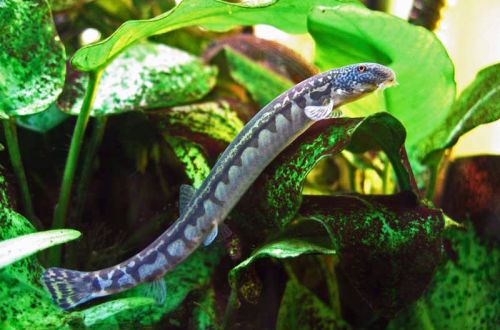
Indian knife
Fish Indian knife, scientific name Chitala ornata, belongs to the Notopteridae family. A large fish with an unusual body shape. It requires a lot of money for its content and experience. Despite this, it is quite popular in the aquarium trade, there are even several hybrid varieties.

Contents
Habitat
It comes from Southeast Asia from the Mekong River basin – the largest in Indochina, flowing through Myanmar, Laos, Thailand, Cambodia and Vietnam. Artificially introduced to the Philippines and the United States, where it is grown as a commercial fish. It lives everywhere, inhabits the main channel of the Mekong and its tributaries, lakes, swamps. During the rainy season, it swims to flooded forest regions to spawn.
Description
Adults reach up to a meter in length. The shape of the body resembles the blade of a large knife, which is reflected in the colloquial name of the species. The back is hunched in an arc, on the top of the head there is a small dorsal fin. The lower part of the body is straight and a long fin stretches along the entire length, which is responsible for swimming. The tail, as such, is absent. The color is gray, a characteristic feature is the presence of large black dots with a light border, arranged symmetrically in a row.
Food
Carnivorous species, feeds on small fish, crustaceans and other invertebrates. In a home aquarium, it will accept fresh or frozen food. For example, young Indian knives can be offered bloodworms, small earthworms, chopped shrimp, etc. Adults are offered pieces of fish meat, whole shrimp, large earthworms and similar meat products. You can not feed the meat of mammals and birds. They contain lipids that are indigestible and incapable of being digested.
Maintenance and care, arrangement of the aquarium
Such a large size of fish implies a specialized and very large aquarium over a thousand liters, which should be installed by professionals. Indian knife fish is not for the amateur, so a detailed description of its content is beyond the scope of this site. Those who decide to purchase this fish, for sure, have sufficient knowledge and / or transfer the service to specialists.
Behavior and Compatibility
Relatively peaceful fish, compatible with other species large enough to be eaten. Can be kept singly or in a group. However, with a lack of space, there is a high probability of skirmishes with relatives for territory.





